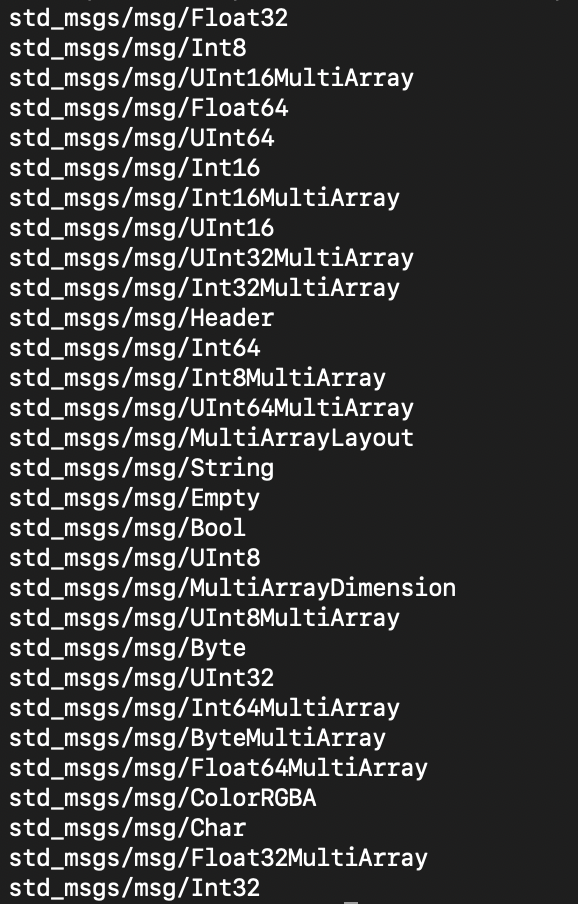ROS2——教你写新版Launch文件 为什么需要launch 如需启动一个节点,只需要执行
1 ros2 run package-name execute-name
但如果需要启动多个节点,一个一个启动需要开很多终端输入很多条命令,所以可以使用launch文件批量启动。
如何编写launch文件 在ROS1中launch文件是一种格式以.launch结尾的xml文档;而在ROS2中推荐使用Python方式编写launch文件,此时的launch文件是一种格式以.launch.py结尾的Python脚本。
启动节点 对于一个基础的启动节点的launch文件,需要引用以下库,然后创建一个名为做generate_launch_description的函数:
1 2 3 4 from launch import LaunchDescriptionfrom launch_ros.actions import Nodedef generate_launch_description (): ......
下文中未注明的均在generate_launch_description()函数中进行操作。
创建LaunchDescription的对象ld(名字任意)
1 ld = LaunchDescription()
然后创建一个Actions.Node对象
1 2 3 4 5 6 7 8 9 10 11 12 13 14 15 example-node = Node( package='package-name' , namespace='package-namespace' , executable='execute-name/script-name.py' , parameters=[{'parameter-name' : parameter-value}], arguments=['-xxx' , xxx, '-xxx' , xxx ], output='screen' , name='node-name' remappings=[ ('/xxx/xxx-new' , '/xxx/xxx-old' ), ] ) example-node2 = Node( ...... )
将上面所有的Node对象加入ld,然后返回
1 2 3 ld.add_action(example-node) ld.add_action(example-node2) return launch_description
调用shell命令 需要添加头文件
1 from launch.actions import ExecuteProcess
使用ExecuteProcess调用shell命令
1 2 3 4 5 6 7 example_cmd = ExecuteProcess( cmd=['some-cmd' , 'some-cmd' ], additional_env={'EXAMPLE_PATH' : path}, output='screen' ) ld.add_action(example_cmd)
获取路径 使用FindPackageShare获取package路径
1 2 3 4 from launch_ros.substitutions import FindPackageShare...... package-name = ‘example-package’ package-path = FindPackageShare(package = package-name).find(package-name)
或者使用get_package_share_directory
1 2 3 4 from ament_index_python.packages import get_package_share_directory...... package-name = ‘example-package’ package-path = get_package_share_directory(package-name),
连接路径 使用join 1 2 3 4 5 6 7 8 9 10 11 import os... file-name = 'example-file.xxx' file-path = os.path.join(package-path, f'example-folder/{file-name} ' ) file-path = os.path.join(package-path, 'example-folder' , file-name) dir -path = os.path.join(package-path, 'example-folder/' )
使用替换 1 2 3 4 5 6 7 from launch.substitutions import PathJoinSubstitution... PathJoinSubstitution([ FindPackageShare('example-package' ), 'example-folder' , 'example-file.xxx' ])
改变参数 一般需要用到以下两个模块
1 2 from launch.substitutions import LaunchConfigurationfrom launch.actions import DeclareLaunchArgument
LaunchConfiguration用于在变量中存储启动参数的值并将它们传递给所需的操作,允许我们在launch文件的任何部分获取启动参数的值。
1 example-cfg = LaunchConfiguration('arg-name' , default='true' )
DeclareLaunchArgument用于定义可以从上述启动文件或控制台传递的启动参数
1 2 3 4 5 6 7 example-arg = DeclareLaunchArgument( 'arg-name' , default_value='xxx' , description='some description' ) ld.add_action(example-arg)
启动另一个launch文件 假设已经存在很多的单独的launch文件用于启动不同的功能,如果需要同时启动这些launch文件,可以使用IncludeLaunchDescription在launch文件中嵌套启动launch文件,这样可以提高复用率。
需要以下两个头文件
1 2 from launch.actions import IncludeLaunchDescriptionfrom launch.launch_description_sources import PythonLaunchDescriptionSource
使用IncludeLaunchDescription嵌套launch文件,其中同样可以使用上文所述的传递参数
1 2 3 4 5 6 7 8 another-launch = IncludeLaunchDescription( PythonLaunchDescriptionSource( os.path.join(launch_file_dir, 'launch-file-name.launch.py' ) ), launch_arguments={'arg-name' : example-arg}.items() ) ld.add_action(another-launch)
在另一个launch文件中使用参数 这是一个困扰了我两天的,比较麻烦的简单问题。我们来看一个实例:这个launch文件有一个字符串格式的路径作为参数,其中的robot_state_publisher需要传入robot_description作为参数,而这个参数需要使用open(),也就是需要那个路径参数。我们自然而然会想到使用LaunchConfiguration,但是当你试图获取urdf_path_cfg的时候会发现这根本不是一个字符串。具体解决方案如下:
1 2 3 4 5 6 7 8 9 10 11 12 13 14 15 16 17 18 19 20 21 22 23 24 25 26 27 28 29 30 31 32 33 34 35 36 37 38 39 40 41 42 43 44 45 46 47 48 49 50 51 52 53 54 import osfrom launch import LaunchDescriptionfrom launch.actions import DeclareLaunchArgumentfrom launch.substitutions import LaunchConfigurationfrom launch_ros.actions import Nodefrom launch.actions import OpaqueFunctiondef launch_setup (context, *args, **kwargs ): use_sim_time_cfg = LaunchConfiguration('use_sim_time' ) urdf_path_cfg = LaunchConfiguration('urdf_path' ) urdf_path = urdf_path_cfg.perform(context) print ('\033[92m' + "robot_state_publisher: Use urdf dir: " + urdf_path + '\033[0m' ) with open (urdf_path, 'r' ) as infp: robot_desc = infp.read() robot_state_publisher_node = Node( package='robot_state_publisher' , executable='robot_state_publisher' , name='robot_state_publisher' , output='screen' , parameters=[{ 'use_sim_time' : use_sim_time_cfg, 'robot_description' : robot_desc }] ) return [ robot_state_publisher_node, ] def generate_launch_description (): ld = LaunchDescription() use_sim_time_arg = DeclareLaunchArgument( 'use_sim_time' , default_value='true' , description='Use simulation (Gazebo) clock if true' ) urdf_path_arg = DeclareLaunchArgument( 'urdf_path' , default_value='robot.urdf' , description='urdf_path' ) ld.add_action(urdf_path_arg) ld.add_action(use_sim_time_arg) ld.add_action(OpaqueFunction(function=launch_setup)) return ld
这种写法我个人认为极其不优雅,但是确实能解决实际问题。
强烈建议ROS加入获取参数内容的方法!!!!!





